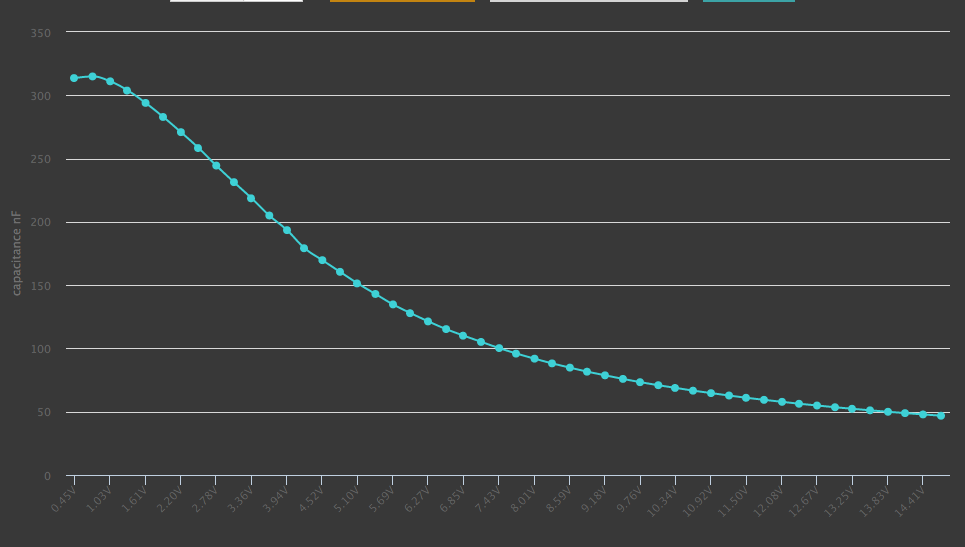Full disclosure: I helped limpkin, the creator, beta test this meter (he sent me prototypes to play with). This was a chance encounter, I am in no way affiliated with the project beyond that, nor do I have any financial or other stake in any of it. It just seemed like I cool project, and one that did something particularly useful in my line of work, and I can personally say it works and works very well. So I wanted to share

.
This should be of interest to anyone who uses ceramic capacitors with type II materials (X7R, X5R etc.). It's been discussed on this forum a few times, but all of the larger capacitance capacitors suffer a significant loss of capacitance as DC bias increases. This is of particular significance to, say, designers of DC/DC or other switchmode power conversion stuff. If you've ever had more input or output ripple than the math says you ought to, this is probably why

. Sometimes, those 10µF caps turned into 2µF caps.
Frustratingly, not all vendors seem to include the characterization curves for this with their capacitors. Murata and Taiyo Yuden are pretty good about it, but ugh, I've yet to see AVX and Kemet ever include this information. Which is why their capacitors never win the pads on my boards.
Anyway, the main factor in this is not the voltage rating but the physical size of the ceramic capacitor. Larger the capacitor, less severe the loss of capacitance will be. For some personal projects, I wanted some hefty 1812 and even 2220 size ceramics, but wasn't really willing to pay for...ahem... good ones.
https://www.kickstarter.com/projects/limpkin/opencvmeter-rediscover-your-capacitorsThankfully, we have aliexpress! They have no end ceramic capacitors with fanciful specs (100µF...100V? In an 1812? I smell bs) for suspiciously low prices. I decided, with this meter in hand, to order a whole range of these sketchy capacitors and see how bad they really are. Unfortunately, only a few have arrived so far. I plan to make a post about the results regardless. That's outside the scope of this post though, I just wanted to give an example of how one might use this meter.
It's all open source, can take measurements of leakage current as well as instantaneous capacitance under a few hundred millivolts to 15VDC bias. It's even possible to inject external bias into the meter (though this is uh not a good idea....bad things will happen if the test leads are shorted during this). The software is a chrome app, it runs on anything Chrome runs on. The really ingenious bit is that it does everything using USB HID, so no driver is needed. It simply 'works'. It even worked on my hackintosh with hacked USB ports broken out from the PCIE bus =P.
I did take the curve of some other capacitors, here is an action shot of the curve (shown within the meter's software) of a 330nF 0603.
